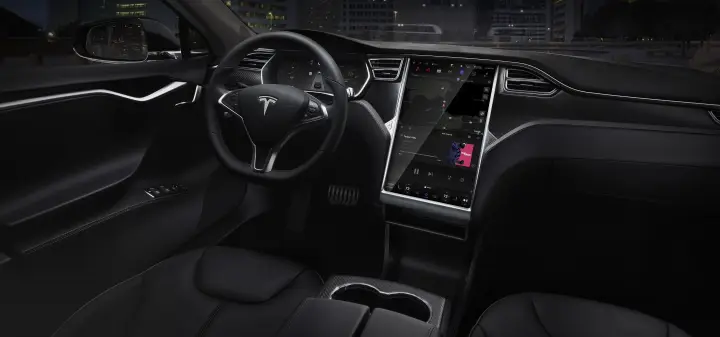In 2023, the world of autonomous electric vehicles (EVs) is undergoing a seismic shift, thanks to groundbreaking advancements in artificial intelligence (AI). According to a recent study by Bloomberg Green, the global market for autonomous vehicles is projected to reach $556 billion by 2026, with AI playing a pivotal role. AI’s integration into autonomous EVs is not only enhancing vehicle safety and efficiency but also redefining the future of mobility. In this article, we’ll explore the latest trends and innovations in AI-powered autonomous EVs, and what they mean for our roads and our lives.
The Role of AI in Autonomous EVs: Driving Innovation Forward
AI and Autonomous Driving: A Match Made in Technological Heaven
AI is at the heart of autonomous driving, enabling vehicles to perceive their environment, make real-time decisions, and navigate complex traffic scenarios. Companies like Tesla and Waymo are leveraging AI to refine their autonomous driving systems. In Tesla’s Full Self-Driving (FSD) beta, AI algorithms analyze data from cameras and sensors to improve vehicle performance continuously. As of 2023, Tesla’s FSD has navigated over 1.2 billion miles autonomously, demonstrating AI’s transformative potential.
Machine Learning: The Brain Behind the Wheel
Machine learning, a subset of AI, is crucial in training autonomous vehicles to recognize objects, predict movements, and adapt to diverse driving conditions. For instance, Waymo’s AI system processes terabytes of data daily, learning from real-world driving experiences to enhance accuracy and safety. This continuous learning loop is essential for creating reliable autonomous EVs capable of handling intricate driving environments.
Computer Vision: Seeing is Believing
Computer vision technology is another critical component, enabling vehicles to “see” and interpret their surroundings. Hyundai’s autonomous EVs, equipped with cutting-edge computer vision systems, can identify pedestrians, cyclists, and other vehicles with remarkable precision. This capability not only boosts safety but also improves the overall user experience, as vehicles can respond more intuitively to dynamic road conditions.
Current Trends in AI and Autonomous EVs
Enhanced Safety Features with AI
AI is revolutionizing safety in autonomous EVs by predicting and preventing accidents. According to the National Highway Traffic Safety Administration (NHTSA), advanced AI systems have reduced collision rates by over 40% in autonomous vehicles. Features such as automatic emergency braking, lane-keeping assistance, and adaptive cruise control are now standard, driven by AI’s predictive analytics.
AI-Powered Energy Management
Efficient energy use is crucial for maximizing the range and performance of EVs. AI-driven energy management systems are optimizing battery usage by analyzing driving patterns and environmental factors. Companies like Rivian and Lucid Motors are pioneering AI-based energy solutions that extend battery life and improve charging efficiency, making EVs more viable for long-distance travel.
The Rise of AI-Driven Mobility Services
AI isn’t just transforming vehicles; it’s also reshaping how we use them. Autonomous ride-sharing services, powered by AI, are gaining traction in urban areas. For example, Uber’s AI-driven autonomous fleet in Phoenix, Arizona, provides efficient and eco-friendly transportation, reducing the need for personal vehicle ownership and contributing to lower urban congestion.
Practical Guide: Embracing AI in Autonomous EVs
How to Choose the Right AI-Powered Autonomous EV
- Research Brands: Consider established brands like Tesla, Hyundai, and Waymo known for their AI advancements.
- Evaluate Safety Features: Look for vehicles with comprehensive AI-driven safety systems.
- Assess Energy Efficiency: Opt for models with AI-enhanced battery management for longer range.
- Test Drive: Experience the AI features firsthand to ensure they meet your needs.
Where to Experience AI-Driven Mobility
- Urban Test Drives: Many cities offer autonomous vehicle test drives. Check local listings for opportunities.
- Ride-Sharing Services: Services like Uber’s autonomous fleet provide a glimpse into AI-driven mobility.
- Auto Shows: Attend events like the Consumer Electronics Show (CES) to see the latest AI innovations in action.
Conclusion: The Future of Mobility
In conclusion, AI is undeniably revolutionizing the landscape of autonomous EVs, making them safer, more efficient, and more accessible than ever before. As AI technology continues to evolve, we can expect even greater advancements in autonomous driving capabilities and energy management solutions. For those eager to embrace this innovative technology, the future is bright with endless possibilities. Are you ready to experience the next generation of mobility? As we look ahead, the integration of AI in autonomous EVs promises not only to transform our roads but also to redefine our relationship with transportation itself. Stay tuned for what the future holds!

